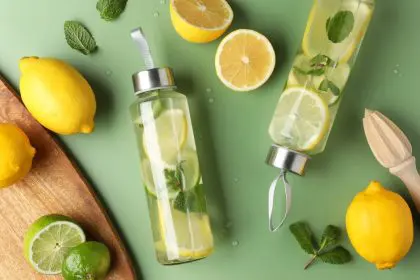Modern hydration habits clash with growing safety concerns over water quality

The modern hydration dilemma
Water safety has become a growing concern, especially as hydration culture continues to dominate social media. While large water bottles and hydration challenges flood Instagram feeds, experts are uncovering disturbing truths about the contamination in America’s drinking water. The pursuit of health through hydration meets troubling safety issues, creating a complex landscape that highlights the need for a shift in how we view and manage our water supply.
The PFAS predicament
One of the most alarming threats to our drinking water comes from forever chemicals, also known as PFAS (per- and polyfluoroalkyl substances). These synthetic chemicals are everywhere—from non-stick cookware to water-resistant clothing—and they don’t break down easily in the environment. As a result, PFAS have infiltrated water supplies across the United States, affecting both urban and rural communities.
Studies have revealed PFAS contamination in drinking water at levels far beyond what’s considered safe. These chemicals have been linked to a range of serious health concerns, including cancer, liver damage, and developmental issues in children. What’s even more concerning is that because PFAS are so persistent, they can remain in water supplies for years, posing a long-term public health challenge that’s difficult to mitigate.
Bottled water’s false promise
In response to contamination fears, many Americans have turned to bottled water as a safer alternative. However, this move may be based on a false sense of security. Bottled water is not immune to contamination, with microplastics being a growing concern. Studies have found that many popular bottled water brands contain tiny plastic particles, which can enter the body through consumption.
The environmental impact of bottled water is also significant. The production, transportation, and disposal of plastic bottles contribute to pollution and environmental degradation. While bottled water may seem like a clean solution, it presents a host of new problems—both for the environment and for public health—making it a less-than-perfect fix for the broader hydration dilemma.
Lead’s lingering legacy
Another serious concern in water safety is the contamination caused by aging infrastructure. Lead pipes, once commonly used for water service lines, continue to threaten the safety of drinking water, particularly in older cities. Lead is highly toxic, especially to children, where even small amounts can impair brain development and cause lasting health issues.
The challenge of lead contamination is vast. Despite efforts to remove lead pipes, many communities still struggle with replacing the outdated infrastructure. The cost of nationwide upgrades is astronomical, and the timeline for full removal is lengthy. Until then, communities with lead service lines remain at risk, and the problem continues to disproportionately affect lower-income neighborhoods and communities of color.
Regulatory response
In response to these water contamination issues, environmental protection agencies, like the EPA, are ramping up their efforts to monitor and regulate the water supply. New regulations targeting PFAS, lead, and other harmful substances are beginning to take shape. However, enforcement and implementation remain key challenges.
While stricter standards are a step in the right direction, the pace at which these changes are enacted is frustratingly slow. Local governments and utilities often lack the resources to keep up with the required monitoring, and the systems in place for treating contaminated water are outdated in many areas. That said, the shift toward more comprehensive water safety measures is necessary to protect public health in the long term.
Source assessment
To fully understand water contamination, it’s important to look at the journey of water from its source to the tap. Water sources vary widely—from groundwater to surface water—and each faces different risks. Groundwater can be more vulnerable to contamination from industrial activities, while surface water is at greater risk from agricultural runoff, including pesticides and fertilizers.
Because of these differences, treatment methods need to be tailored to the specific risks of each water source. Understanding the potential contamination risks at the source and ensuring that proper treatment is in place is crucial for maintaining safe drinking water. Transparency in water quality reporting and public education about local water conditions are essential to help consumers make informed decisions about their hydration.
Consumer protection
Ultimately, while systemic change is essential, individuals also have a role to play in ensuring their water is safe. As contamination concerns rise, it’s important for consumers to take a proactive approach to water safety. Regular water testing is one of the most effective ways to assess the quality of drinking water, especially in homes with older pipes or wells.
Filtration systems, such as reverse osmosis or activated carbon filters, can significantly reduce the presence of harmful contaminants like lead and PFAS. Staying informed about local water quality reports and advocating for better regulation can also help drive change. When communities work together to demand clean water and greater transparency, they can hold public officials and corporations accountable for maintaining safe and clean water supplies.
The path forward
The water crisis in America is not a simple problem with an easy fix. It’s a multi-faceted issue that requires systemic changes in regulation, infrastructure, and consumer awareness. While the issues of PFAS, lead, and microplastics seem daunting, they are not insurmountable. With continued advocacy, better enforcement of safety standards, and the implementation of advanced water treatment technologies, it’s possible to secure a cleaner, safer water future.
By educating ourselves on the dangers in our water supply and taking steps to protect our health, we can work toward a future where safe hydration is not just a luxury, but a fundamental right for all.













